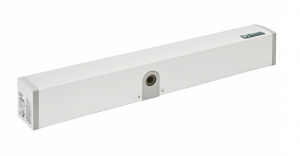Single Gang Contactless Antimicrobial Toilet Sensor SGWCHAND-LOCK
Single Gang Contactless Antimicrobial Toilet Sensor
“No Touch” Single Gang hardwired Hand sensor with scratch resistant, antimicrobial acrylic label. The switch is activated when a hand approaches, Switching red & blue LEDs to show locked or open status. Powered by 12-24Vdc,
Our contactless WC sensor has an activation range of up to 50mm making them touch free. If touched, the entire sensor is protected by Steritouch additive which kills 99.9% of germs.
Our SteriTouch® sensors offer protection against a range of bacteria including the Flu Virus, E. coli, MRSA, Salmonella and Legionella, as well as black mould growth, biofilm and fungi. Mould growth is responsible for costly redecoration cycles and respiratory complaints, especially in damp and humid environments where its prevention is otherwise difficult.
SteriTouch® works continuously and effectively to restrict this growth before it appears. It eradicates the bacteria which cause contamination and infection, as well as those responsible for odours and staining. The antimicrobial effect also protects the product against degradation, extending its use!






BEST PRICE
Prices that are hard to beat!
TRADE ENQUIRIES
Set up an online account or contact us for the current trade prices
GUARANTEED
Next-Day Delivery*
Reviews
You Might Also Like
-

Contactless Toilet Door Kit WCKIT-HAND
Contactless Toilet Door Kit Our touch free disabled persons toilet door opener kit, includes sensors, control...
£352.63Excluding Sales Tax | ShippingBUY NOW -

Single Gang Antimicrobial Door Assist Toilet Sensor SGWCASSK
Door Assist Toilet Sensor Door Assist external WC touch sensor with scratch resista...
£85.27Excluding Sales Tax | ShippingBUY NOW







